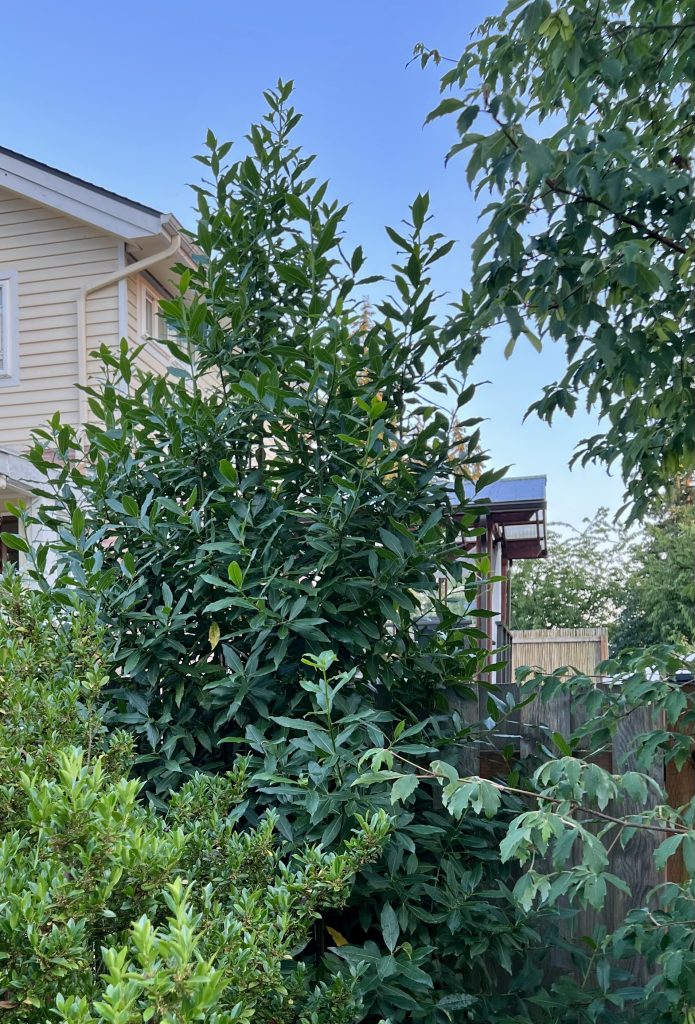I’m a firm believer in “loving thy neighbor” but if your view is directly into their dining room, it can be too much of a good thing. Robert Frost’s proverb “good fences make good neighbors” also comes to mind when thinking about city and suburban living. I can turn that concept into a private garden – with or without a fence – using beautiful plants and trees to add softness, color and texture.
THINGS TO CONSIDER WHEN SELECTING PLANTS

Growth rate and ten year size? How long will it take the plant to grow large enough to achieve the desired size? If it grows too tall or wide, can it be pruned effectively? These are questions my clients frequently ask.
When planning small gardens, I avoid fast growing conifers (think needles and cones) that will quickly outgrow a space. When hard pruning is required to limit their size, it will only ruin their appearance and damage the tree. The leyland cypress is a popular choice for privacy hedges because it will provide dense coverage in just a couple years with regular shearing. However, in a confined space it will reach a point where it cannot be maintained and even need to be removed.
Here are some well-behaved broadleaf evergreen plants for screening:
LAURUS NOBILIS (BAY LAUREL)
A large, compact shrub or small tree with deep green, aromatic leaves also used in cooking. Bay laurel has a dense habit, making it an excellent choice for small gardens. It reacts well to pruning and is easily manipulated to fit strategic spaces. It grows slowly, so buy one that is already large if you want immediate results. Avoid the cultivar ‘Emerald Waves’ because it is susceptible to disease and winter cold damage.
MYRICA CALIFORNICA (PACIFIC WAX MYRTLE)
This fast-growing Pacific wax myrtle is a dense shrub with small, grass green ovate leaves that cover its woody stems and branchlets. New foliage sprouts anywhere stems are cut making it easy to manage. Pacific wax myrtle needs full sun and occasional pruning to maintain its density. It will easily reach ten feet tall or more within a few years. It can be clipped, but looks best in its natural form.
PRUNUS LUITANICA (PORTUGAL LAUREL)
Deep green, glossy leaves and a broad, dense habit make this a good shrub for large spaces. Portugal laurel grows moderately fast in medium rich soil and becomes a small tree as it matures. It can be pruned as a hedge, but looks best with only occasional shaping to enhance its graceful form and attractive new foliage.
Tip: All plants, even those that are considered drought tolerant, need regular water until they are well-established.
MORE IDEAS
With summer in full swing, revitalizing your garden is a great way to prepare for the fall planting season!
If you’re looking for more ideas, please contact me for a design consultation to learn about landscape design or how to maximize the impact of plantings for any spot in your garden.
